SEARCH






|
|
|
|


by Editor Lourens Durand
Published the 6th of October 2021
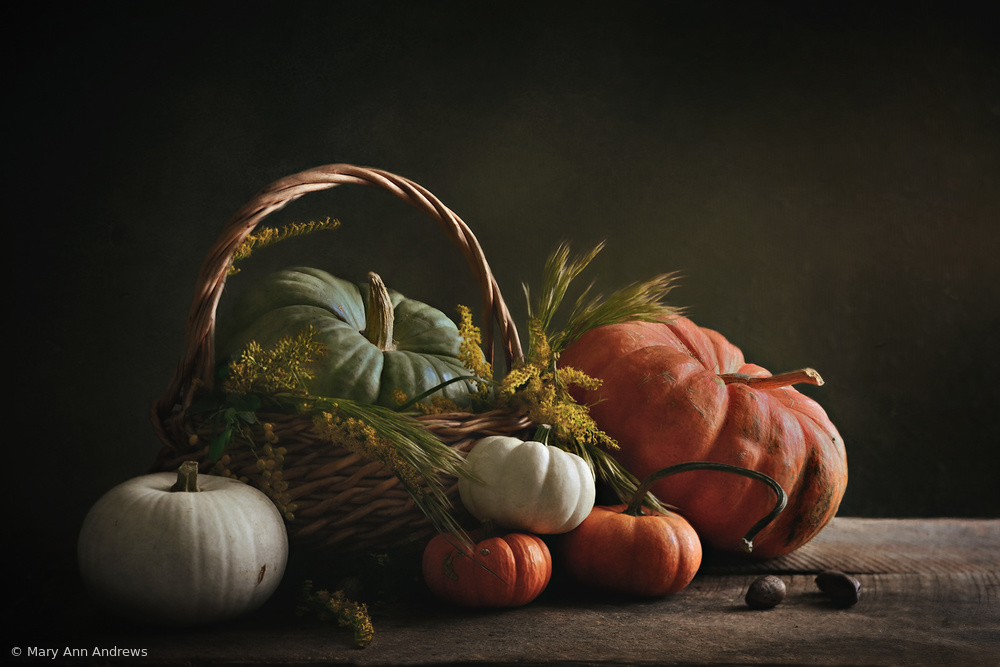
'Autumn Harvest' by Marie Ann Andrews
Food Photography, as with all other genres of photography, is all about the light. A great composition poorly lit is not going to win any prizes. Light and shadow define the subject, create the mood and make the shot.
Helene Dujardin, in her book “Plate to Pixel” writes: “Assessing light and figuring out how to use it in food photography is very much like courtship and the pursuit of capturing someone’s heart. To find the right light you must observe, explore and discover.” Then repeat the process until you get the desired effect, mood and ambience. Only then do you look at refining and fine-tuning the composition.
Whether you use outdoor light, window light or studio setups, the same basic principles apply, but the effects can be quite different.
Hard light (bright sunlight, window light or bare studio strobes) creates crisp, dark shadows and high contrast and can result in quite a dramatic effect.
Soft lighting has a gentle and smooth effect and is created by:
Diffusing the light source by placing a bed-sheet, tablecloth, netting or a gauze scrim between the source and the subject.
· Reflecting the light off custom-made reflectors, foam boards, sheets of cardboard, walls or ceilings (reflectors do not always need to be white – green is effective for highlighting salads, gold for meat, bread and cake, and tin foil for more neutral reflections). Strips of tin foil are especially useful in lighting up dark areas under plates.
Positioning of the light source is also important in creating different moods and effects:
Front lighting on its own can be dull and flat.
· Backlighting is often the method of choice in food photography as the highlights and contrasts that are created accentuate the textures of the subject.
· Side lighting provides added dimensions of highlighting and shadows, enhancing form and depth.
· Innovative merging of two or more light sources to yield tonal values from pure black to pure white with several tones in between, creating depth, dimensionality, texture and form to your composition.
Remember the Inverse Square Law of Lighting: “By doubling the distance between a light source and a subject, you light up four times the area at a quarter of the intensity”.
Subtle light-altering effects can be achieved with a little “doctoring”:
Spraying grapes with deodorant spray gives them a frosty appearance (just remember not to eat them afterwards!).
Spraying hairspray onto cakes, bread and buns keeps them looking fresh.
Lemon juice can be used to freshen salads.
Portable clothes steamers are great for creating smoke and steam.
Cotton wool soaked in water and then microwaved are also good steam generators.
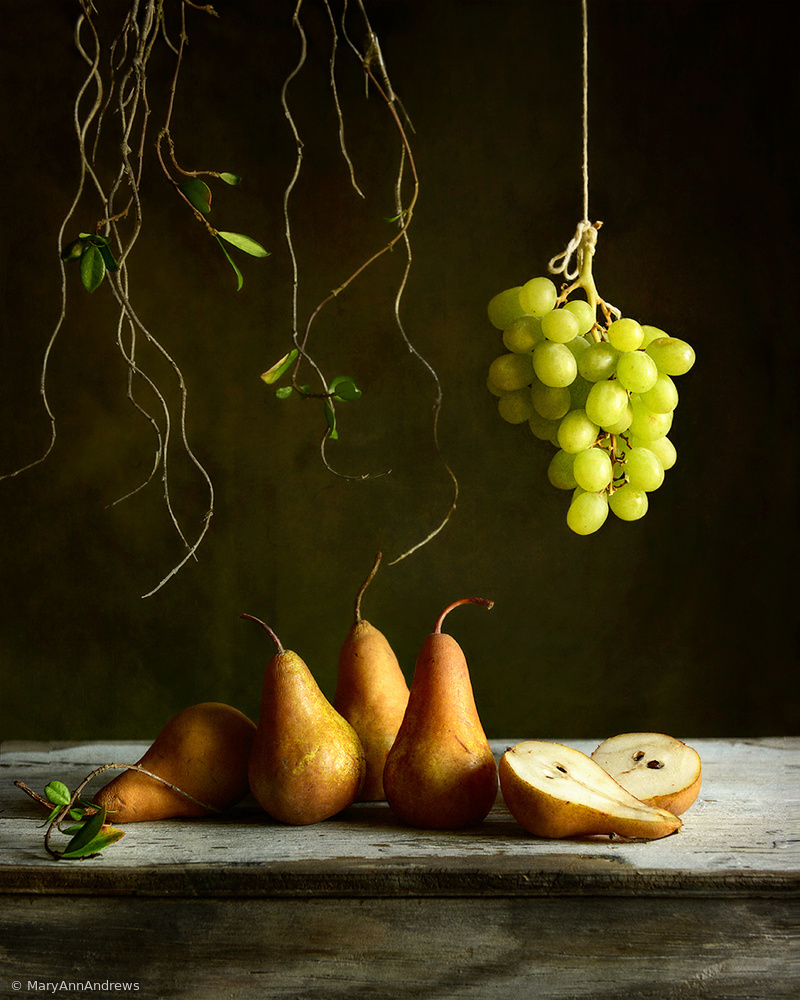 'Low hanging fruit' by Marie Ann Andrews
'Low hanging fruit' by Marie Ann Andrews
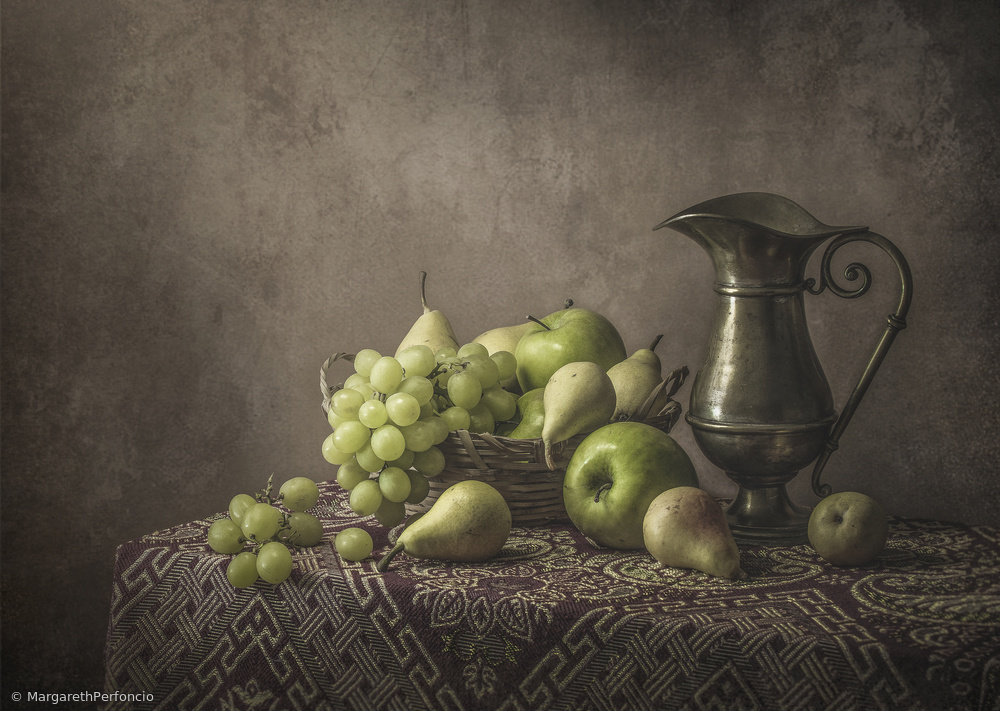
'Fresh fruits in the morning light...' by Margareth Perfoncio
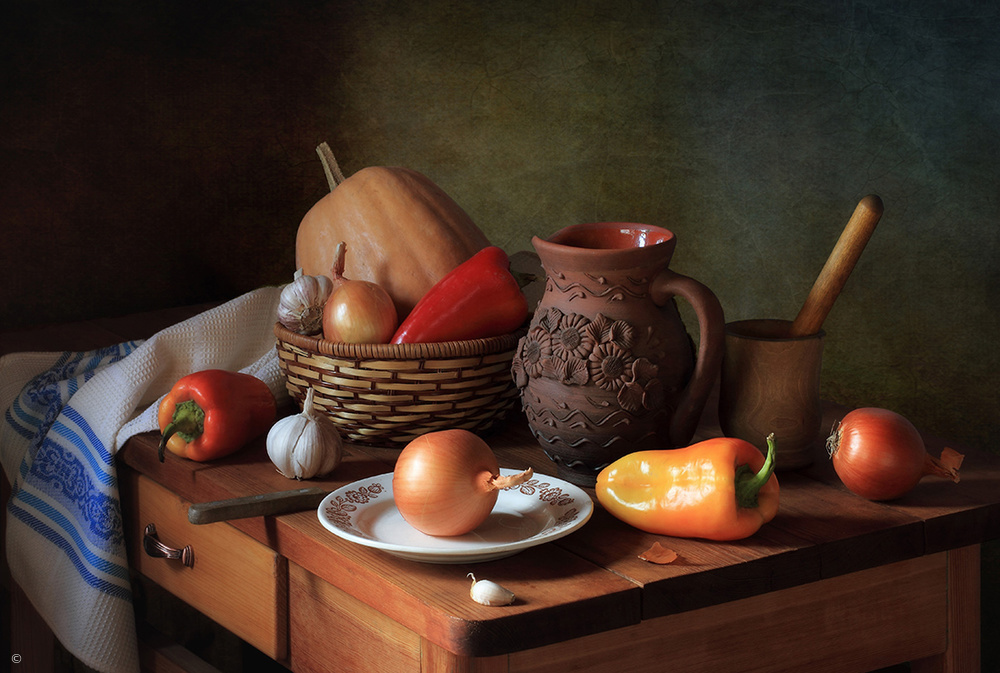
'Still life with vegetables' by Татьяна Скороход
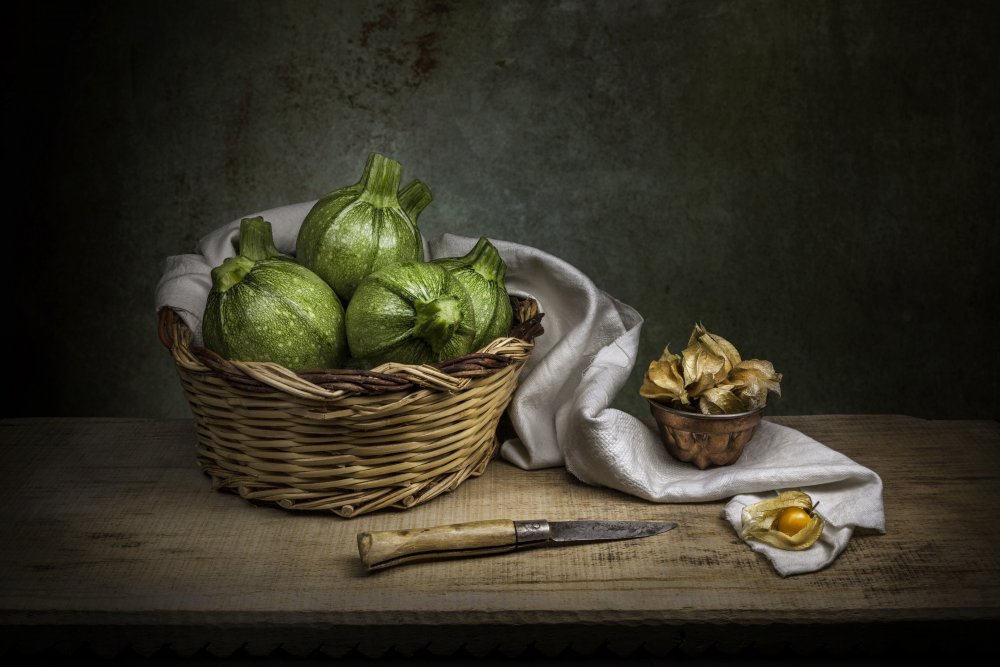
'Funny vegetables' by Adriana Vitale
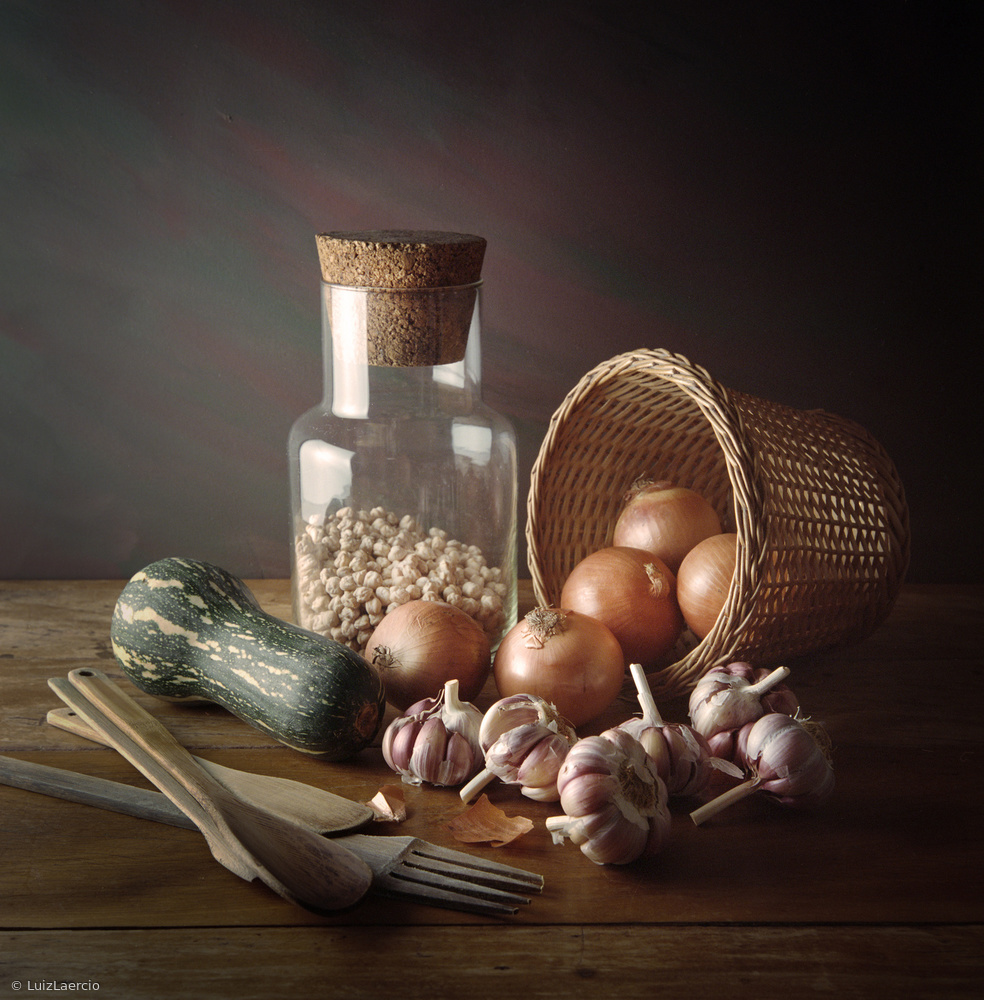
'Still life with a Rolleiflex' by Luiz Laercio
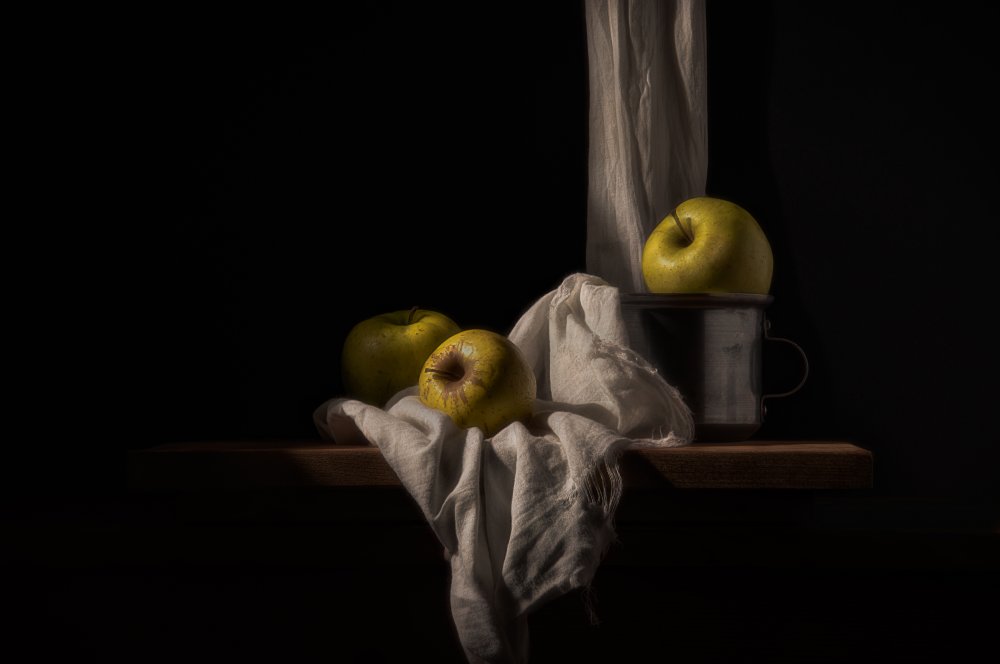
'Still life with bottles – futurist locomotive' by Kádár István
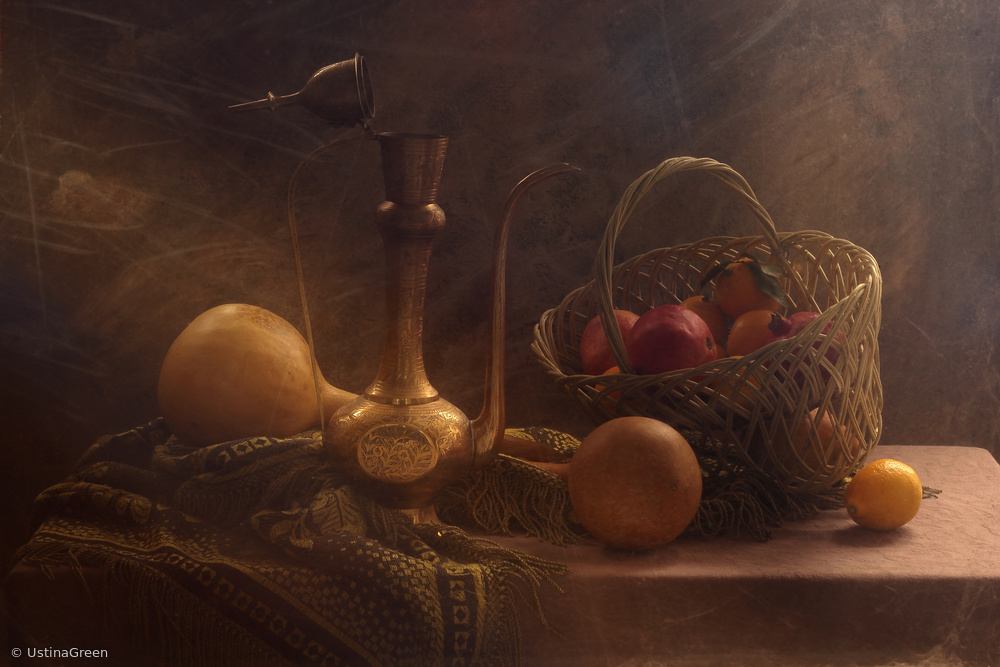
'The Pumpkins and Fruit Basket' by UstinaGreen
Once the lighting is set up to your satisfaction, you can start looking at fine-tuning the composition. At this stage, it is useful to have your camera on a tripod, so that the view of the composition is a constant. It is also useful to use manual focus and do all your camera settings so that you do not have to think about too many things while concentrating on the composition.
One of the settings that you should consider is the lowest possible ISO, not only to reduce noise, but also to enable a relatively low shutter speed, enabling you to paint light into difficult areas using a narrow beam torch whilst the shutter is open, especially when using natural light.
When glasses or bottles are part of the composition, unwanted reflections become a huge problem.
The secret is not to light the glass (or bottle) - use backlighting or reflected light. For backlighting, hang a sheet in front of a window or in front of a studio light, or use a soft-box from behind, with or without a scrim to soften the light even further.
For a dark background, you could place a black card between the glass and the light disperser, allowing the light to spill around it. This also adds thin vertical and pleasing reflections on the sides of the glass or bottle. For a further refinement, add a soft-box sidelight or reflector card slightly behind and to one side of the glass to give another pleasant vertical reflection.
Whatever lighting setup you choose, it helps to darken the studio and to wear dark clothes to prevent unwanted reflections.
Sounds complicated but is well worth the effort.
Enjoy the food, glass and bottle photographs from 1X.com photographers selected to whet your appetite ;-)
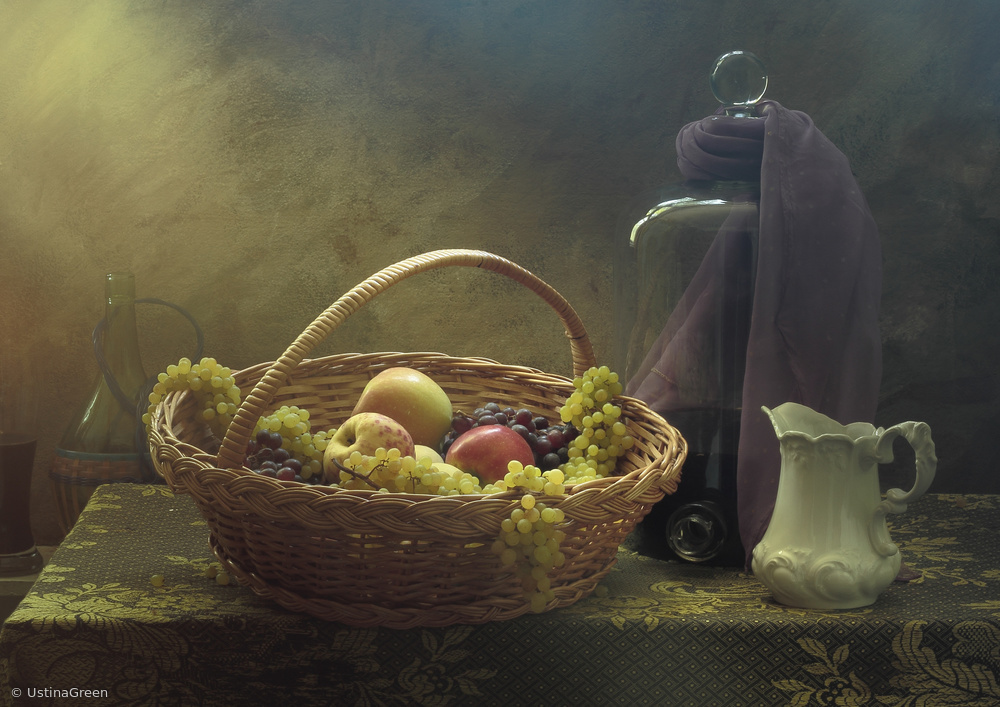
'Still Life with Fruits Basket' by UstinaGreen
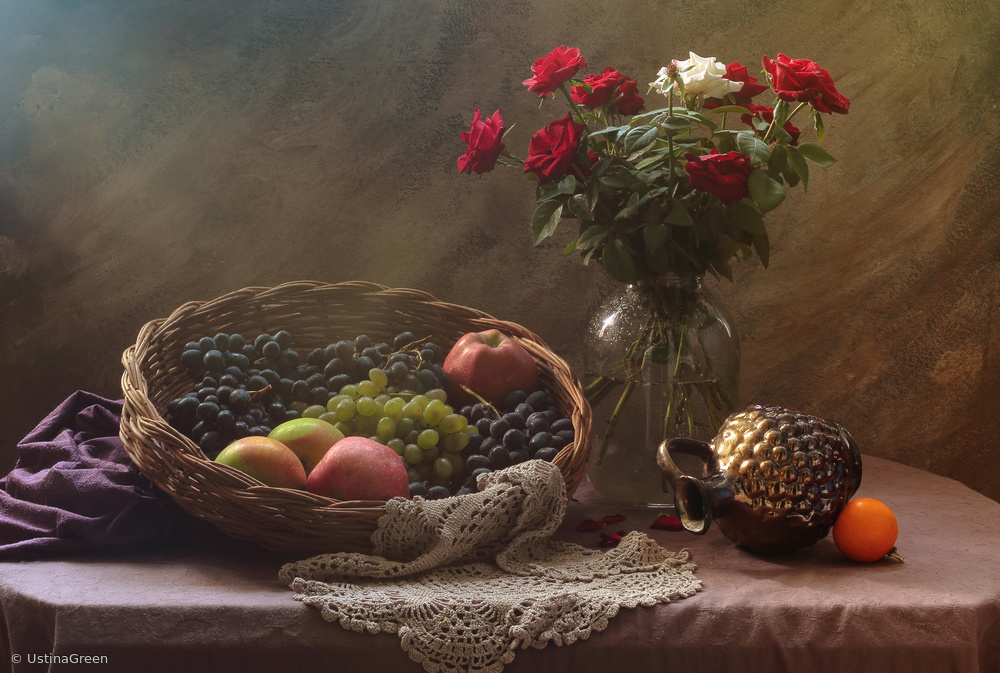
'Still Life with Fruit and Roses' by UstinaGreen
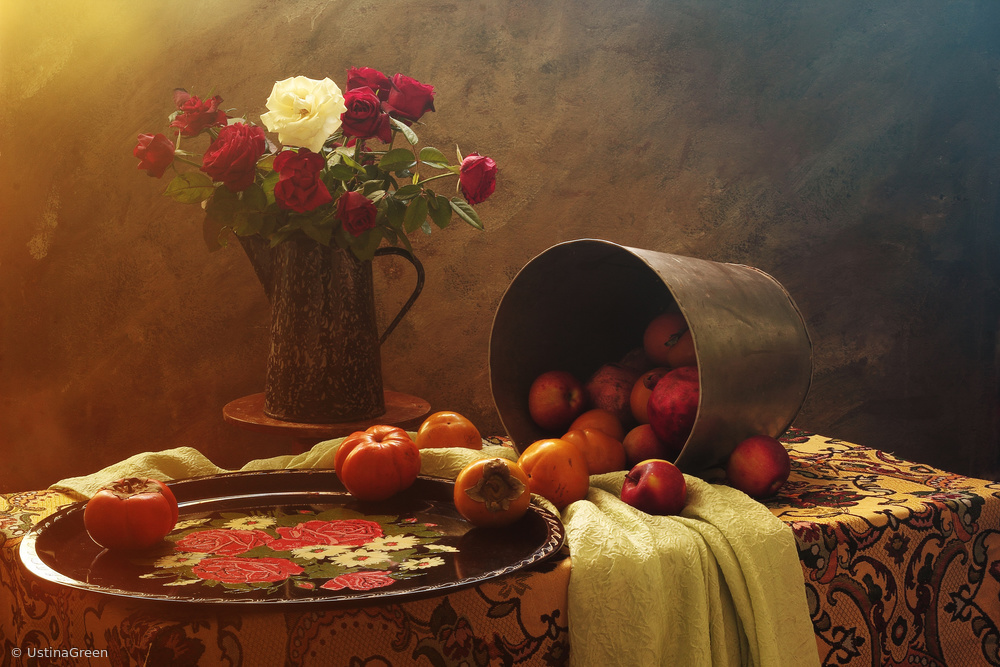
'Still Life with Roses and Fruits' by UstinaGreen
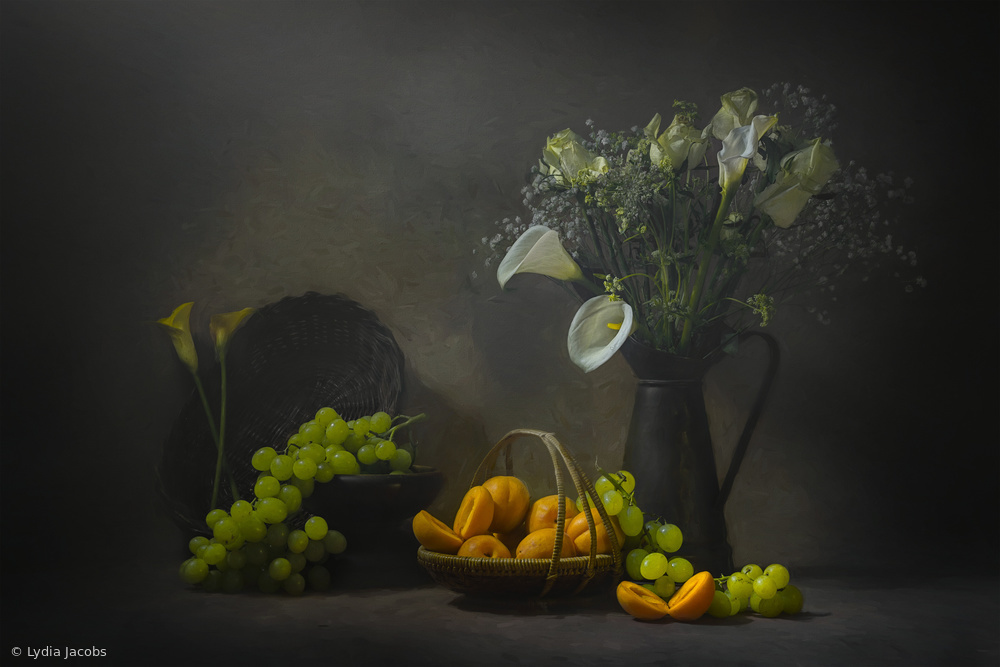
'Summer Fruit' by Lydia Jacobs
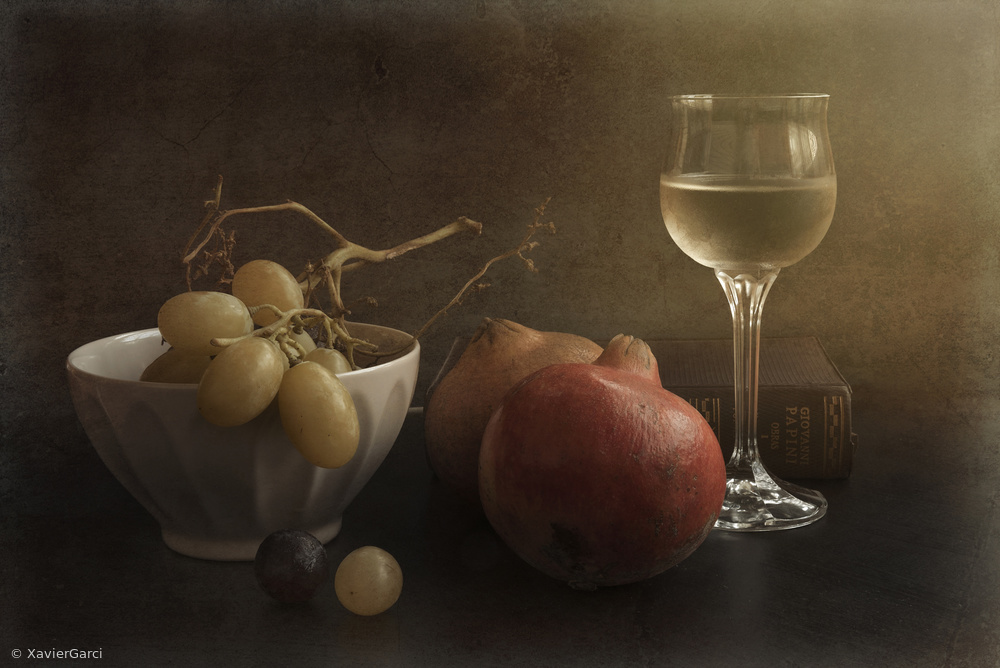
'Still Life with Book' by Xavier Garci
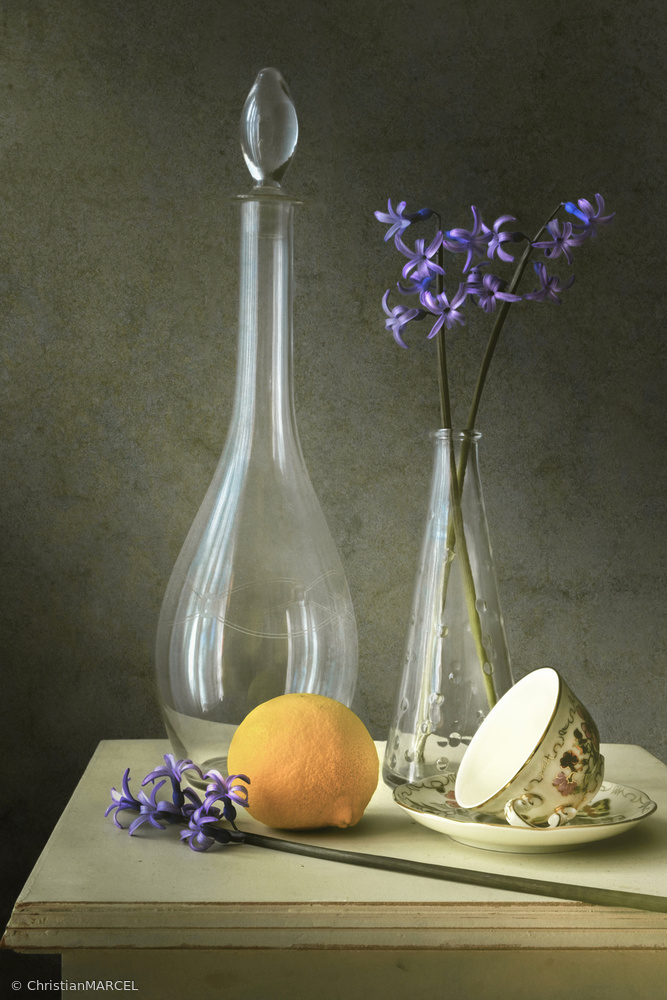
'Still Life with Hyacinths' by Christian Marcel
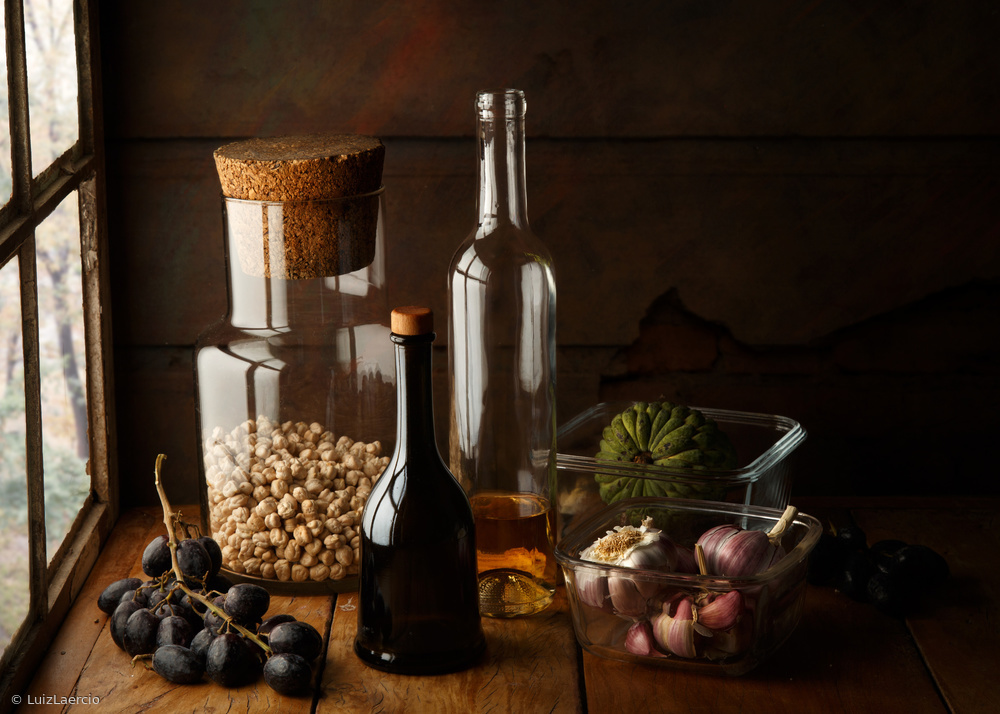
'Still Life with Chickpea' by Luiz Laercio
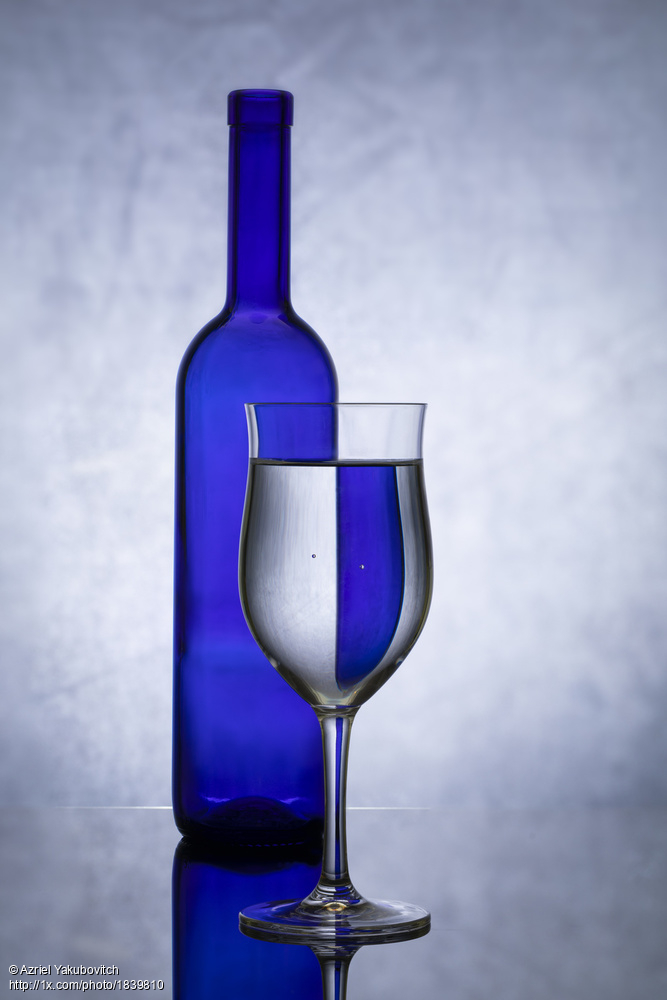
'Blue glass' by Azriel Yakubovitch
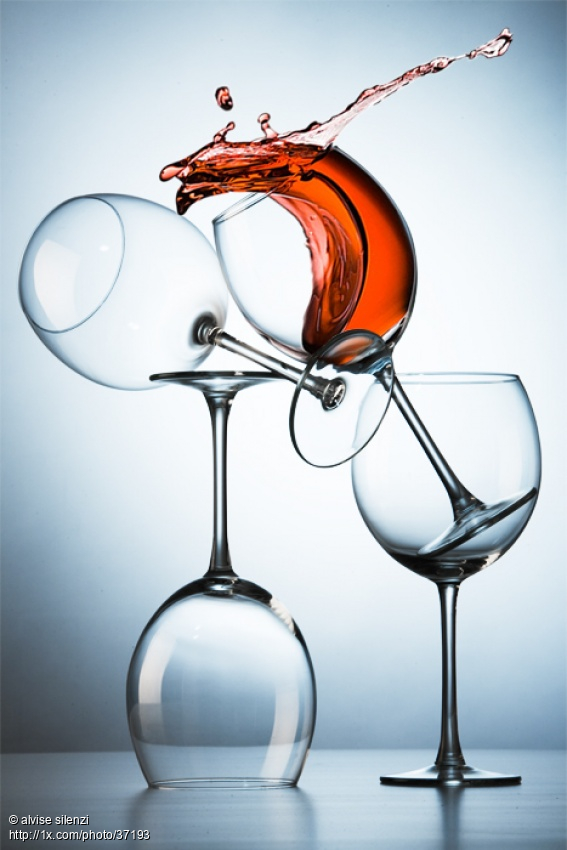
'glassfish' by alvise silenzi
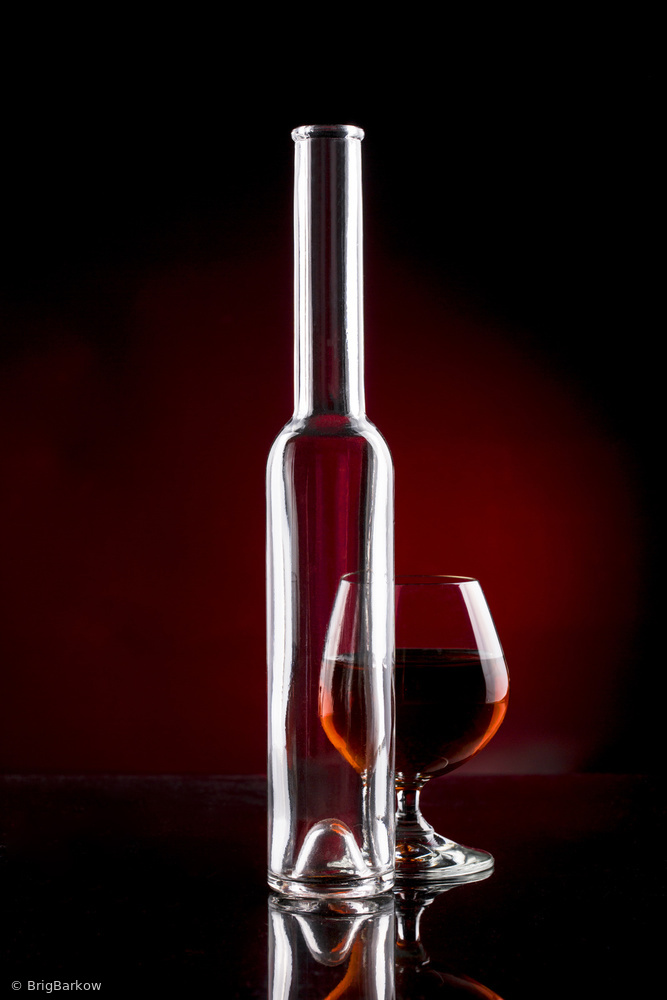
'Still life with a glass bottle' by Brig Barkow
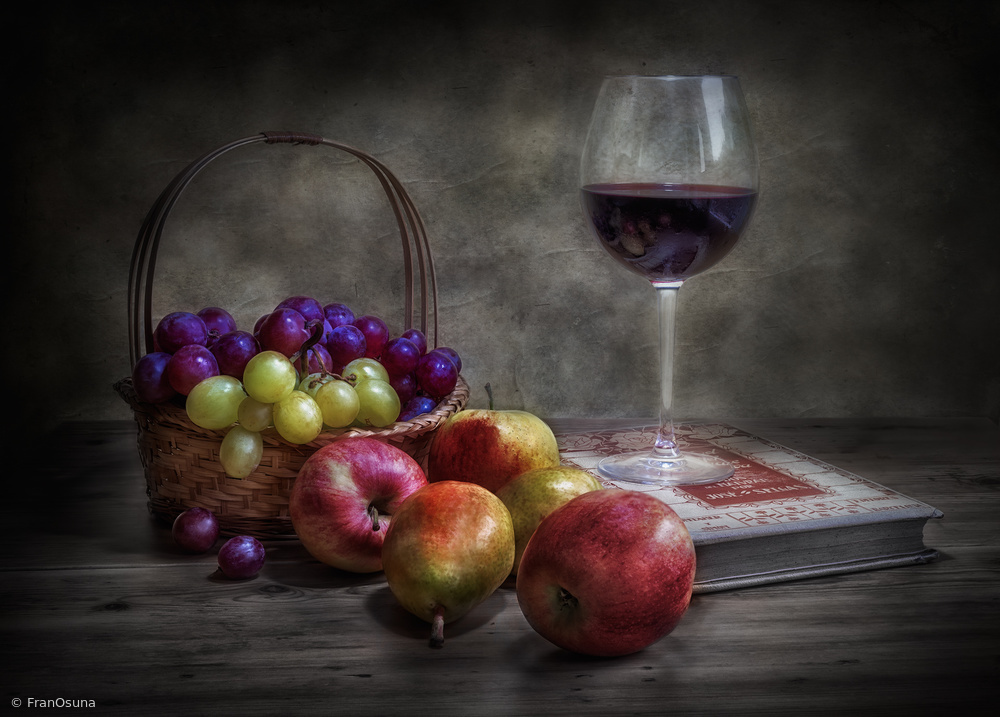
'Wine, fruit and reading' by Fran Osuna
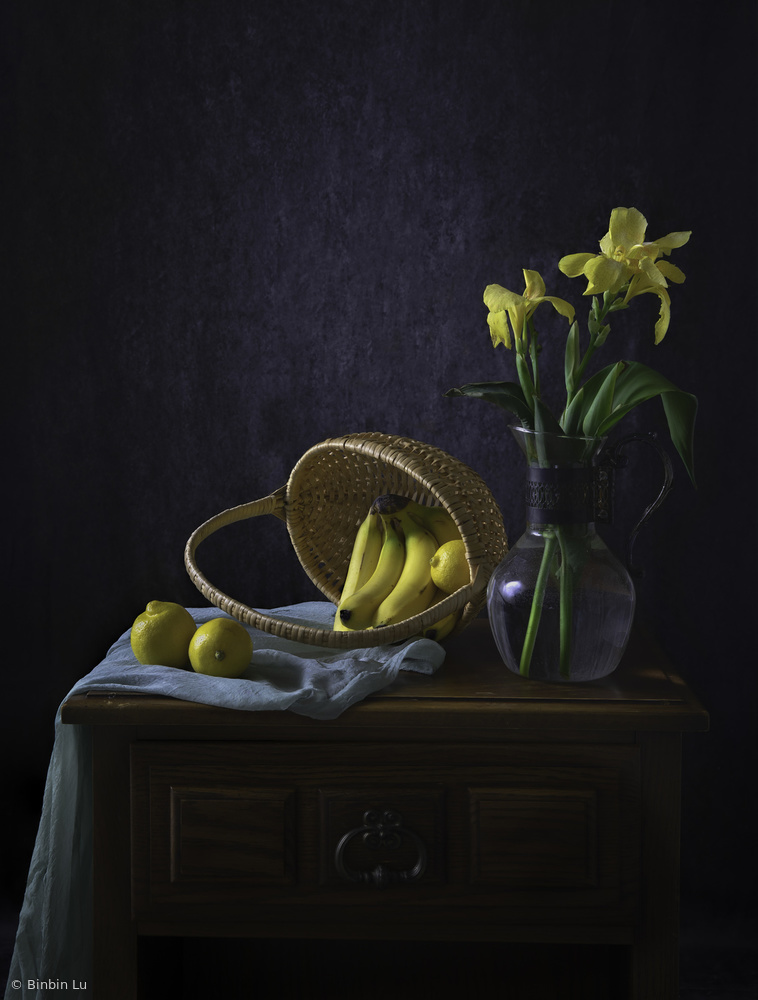
'Yellow Canna and Fruits' by Binbin Lu
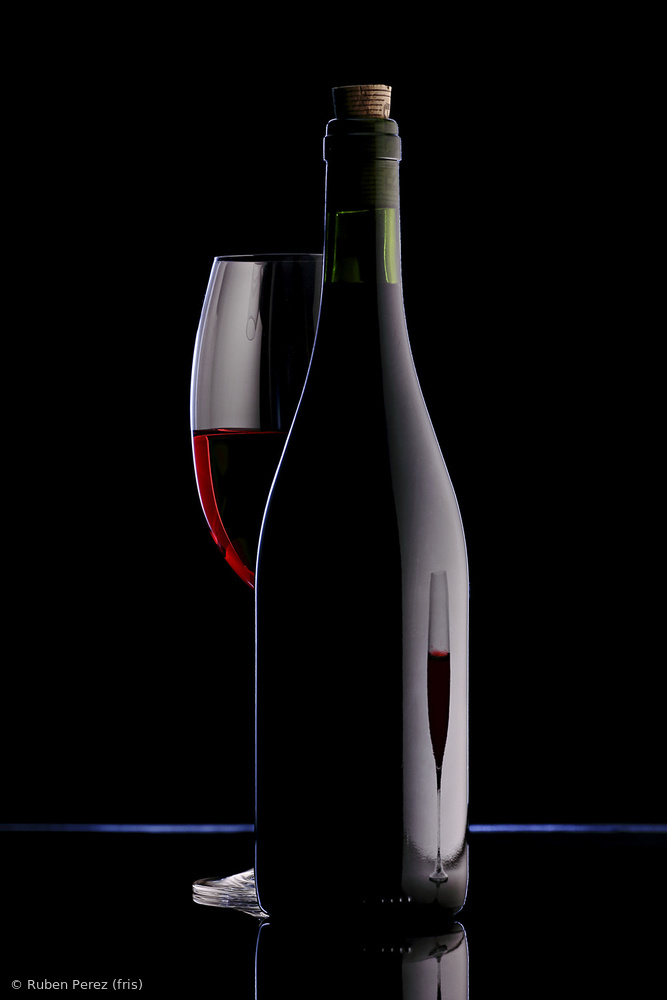
'The last bottle' by Ruben Perez (fris)
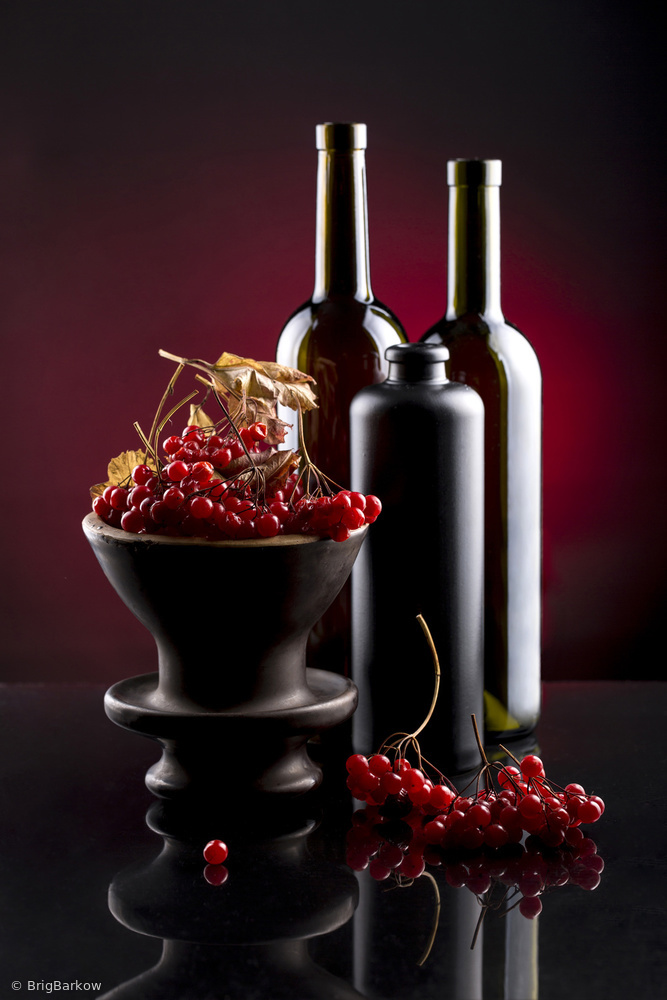
'Red Viburnum. Hypertonic still life.' by Brig Barkow
 | Write |
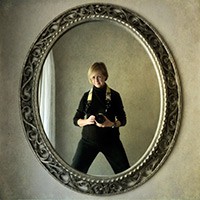 | Mary Ann Andrews PRO Many thanks for featuring my photos in your artcicle. Great article! |
 | Marita Beneke Thanks for the very useful article and the interesting tips. Great examples of using light. Loved it! |
 | Lourens Durand CREW Thank you Marita |
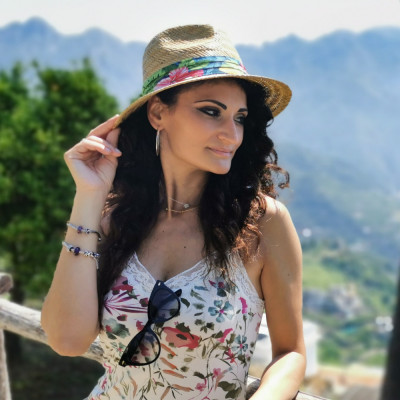 | Adriana Vitale Onoratissima per la scelta! Grazie mille! |
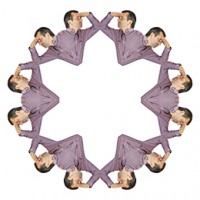 | Brig Barkow PRO Thanks for posting! |
 | Filiberto Galli PRO Really interesting article with useful advice. Many thanks Lourens |
 | Lourens Durand CREW Thanks Fiolibertoo! |
 | Lourens Durand CREW Thanks Filiberto! |